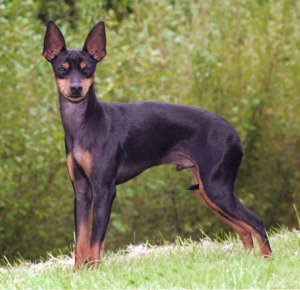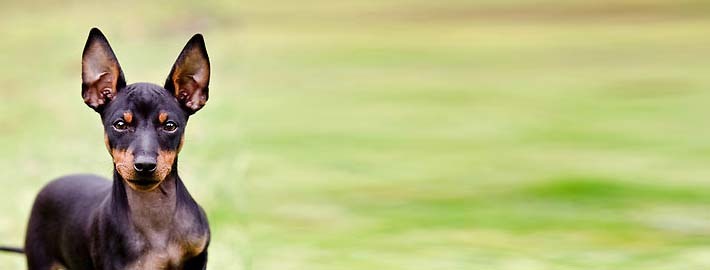What makes the English Toy Terrier Unique?
The Toy breeds are small companion or lap dogs. Many of the Toy breeds were bred for this capacity although some have been placed into this category simply due to their size. They should have friendly personalities and love attention. They do not need a large amount of exercise and some can be finicky eaters.
Breed Groups
- Toy size
Page Contents

Is the English Toy Terrier Right For You?
In 5 Words
- Alert
- Docile
- Friendly
- Responsive
- Hunter
Characteristics
Learn About the English Toy Terrier
Description
This is the oldest of Britain’s native toy breeds. Before 1960, it was known as the Miniature Black and Tan Terrier, but devotees felt that this name was one that any terrier type in black and tan could utilise, so the name was changed to English Toy Terrier. Black and Tan terrier types can trace their history back at least as far as the early sixteenth century. Small Black and Tans were kept in the Regency and Georgian periods and were used variously to help flush foxes and in the rat-fighting pits. But it was as a town dog that the breed really became popular, and the late 1800s saw a selective breeding programme.
Short History of the English Toy Terrier
English Toy Terriers are the offspring of the Old English Black and Tan Terriers. They are closely related to the larger Manchester Terrier. Bred with extremely fast and agile natures, they became popularly used in rat pits. But since the formation of the Kennel Club, the sport was outlawed, making these dogs frequent participants in show rings.
In 1962, the name English Toy Terrier (Black and Tan) was adopted. All sizes of these dogs were then exported to Canada and in the US, founding a population largely isolated from the European breed.
Temperament
These dogs are very alert dogs. Therefore, they should be exercised daily. They are very loyal and faithful dogs that will easily bond to one person.
They love physical contact, love being petted and they enjoy the company of children. Although they are not snappy breeds, they can be wary of strangers. Couple that with their excellent sense of hearing, these dogs make awesome watchdogs.
English Toy Terrier pups bark often but breeders assure that these dogs will grow out of this trait. Two males from this breed won’t get along well since they can be quite dominant. However, females are very easy going. These dogs are easy to train but they can easily get distracted like most terriers.
Caring for Your English Toy Terrier
Grooming & Bathing
The English Toy Terrier is very easy to groom, partly due to its small frame, and partly due to its naturally glossy coat. You should make a habit of giving it a daily brush down, with a standard brush. This alone is usually enough to leave a shiny coat which looks healthy and clean.
Bathing is only necessary when the dog visibly needs to be washed down; otherwise it will keep it nice and clean. The domestic nature of most English Toys means that they rarely make a mess of themselves, and they certainly don’t need as much time and attention as a country bred dog would.
The ear canals should be kept clean and washed on a regular basis. This will help to prevent infections and potential hearing difficulties as the dog grows older, particularly as this breed lives for quite a long time.
Combing isn’t necessary due to the nature of the coat, and only a small number of English Toy Terriers actually shed hair. The ones that do will only shed a tiny amount during the warm season and this is easily dealt with by a quick brush over.
Claws should be kept nice and short, and they need to be trimmed quite often.
Exercise & Training
It is important that basic obedience training should be commenced as soon as possible in order that he should be agreeable to live with and welcome in society. Apart from a tendency to get a bit distracted the ETT is not a difficult dog to train and can do very well in competitive obedience. Sessions should be brief and made as interesting and as much fun as possible for him. Only positive methods which reward good behaviour with treats and praise should be used. Such methods will bring out the best him whereas harsh methods will bewilder and scare him to the extent that he may ‘close down’ and refuse to work for fear of getting it wrong. Early socialization, which introduces him to a variety of people, animals, situations, objects and noises, will ensure that he matures into a well-mannered, friendly adult who is a credit to his breed.











